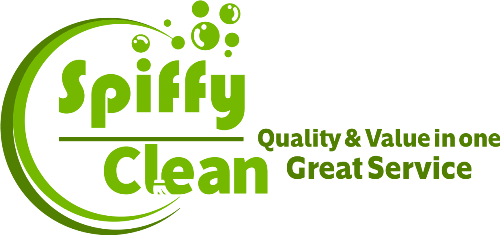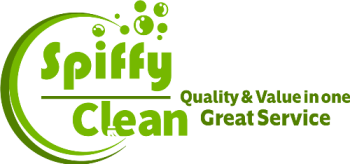Elevating Aged Care: The Crucial Role of Hygiene in Facilities – A Comprehensive Guide to Effective Cleaning Practices
Introduction:
In the realm of aged care, where the well-being of elderly residents is paramount, maintaining a clean and hygienic environment becomes a cornerstone of providing quality care. This comprehensive guide delves into the significance of hygiene in aged care facilities and outlines essential cleaning practices that contribute to a safer and healthier living environment for senior residents.
The Link Between Hygiene and Resident Health:
Ensuring the health and safety of aged care residents begins with a deep understanding of the intricate connection between cleanliness and physical well-being. In communal living spaces, the potential for the rapid spread of infections and diseases is heightened. Effective hygiene practices act as a shield, protecting residents from unnecessary health risks.
Moreover, the psychological impact of a clean environment on the mental health of seniors cannot be underestimated. A well-maintained living space not only fosters a sense of dignity and self-worth but also contributes significantly to a positive mindset. By recognizing this dual impact on both physical and mental health, aged care facilities can prioritize hygiene as a holistic approach to resident care.
Creating a Clean and Comfortable Living Environment:
The importance of maintaining a clean and comfortable living environment in aged care facilities goes beyond routine cleaning tasks. It extends to the very core of resident experience. A clean and organized space not only reduces stress but also promotes a sense of belonging and security among senior residents.
To achieve this, facilities should consider tailoring cleaning practices to accommodate the unique needs of elderly residents. Simple adjustments, such as the proper arrangement of furniture for easy navigation or the strategic placement of hand sanitizing stations, can significantly enhance the overall comfort of the living space.
Understanding Specialized Cleaning Needs in Aged Care:
Aged care facilities face unique cleaning challenges that demand specialized attention. From incontinence care to the maintenance of mobility aids and medical equipment, recognizing and addressing these specific needs is crucial. This involves not only thorough cleaning but also an understanding of the potential vulnerabilities of elderly residents.
Implementing specialized cleaning protocols, such as the proper disinfection of communal areas and regular deep cleaning of resident rooms, contributes to a comprehensive approach in meeting the distinctive requirements of aged care. By acknowledging and accommodating these needs, facilities can create an environment that supports the dignity and independence of senior residents.
The Role of Staff Training and Education:
A critical component of effective aged care cleaning practices is the education and training of staff. The cleaning team plays a pivotal role in upholding hygiene standards, and ensuring they are well-versed in proper procedures is essential.
Training programs should encompass not only the technical aspects of cleaning but also the importance of empathy and sensitivity when dealing with elderly residents. Staff members should understand the impact of their work on the overall quality of care provided. By investing in ongoing education and training, aged care facilities empower their staff to contribute positively to the well-being of residents.
Best Practices for Aged Care Cleaning:
To implement effective cleaning practices in aged care facilities, a structured approach is necessary. Outlining a detailed guide that covers daily, weekly, and monthly tasks ensures a systematic and thorough cleaning routine. This includes not only the visible surfaces but also often overlooked areas that may harbor germs.
A commitment to sustainability is equally important in today’s age. Introducing eco-friendly and sustainable cleaning practices not only aligns with global environmental responsibility but also contributes to creating a healthier indoor environment for residents. From using environmentally friendly cleaning agents to adopting energy-efficient cleaning equipment, facilities can make a positive impact on both resident health and the planet.
Overcoming Challenges in Maintaining Hygiene:
While the benefits of effective cleaning practices in aged care are clear, facilities often face challenges in maintaining high hygiene standards. Common obstacles may include staffing issues, budget constraints, or resistance to change. Addressing these challenges head-on is crucial for ensuring a consistent and reliable approach to cleanliness.
One solution lies in fostering a culture of collaboration and communication within the facility. Engaging staff, residents, and management in an open dialogue about the importance of hygiene and addressing concerns proactively can pave the way for effective solutions. Additionally, exploring innovative technologies and cleaning strategies can help overcome resource limitations and enhance the efficiency of cleaning processes.
Conclusion:
In conclusion, the importance of hygiene in aged care facilities extends far beyond surface-level cleanliness. It directly influences the health, comfort, and quality of life of senior residents. By embracing effective cleaning practices, aged care facilities can create a safe and welcoming environment that promotes the overall well-being of their residents.
This comprehensive guide serves as a valuable resource for those dedicated to elevating the standards of care in aged care facilities through a commitment to hygiene. Recognizing the link between hygiene and resident health, creating a clean and comfortable living environment, understanding specialized cleaning needs, investing in staff training, and implementing best practices are essential steps in this journey. Overcoming challenges through a proactive and collaborative approach ensures that aged care facilities can consistently provide the highest level of care and support for their elderly residents.






